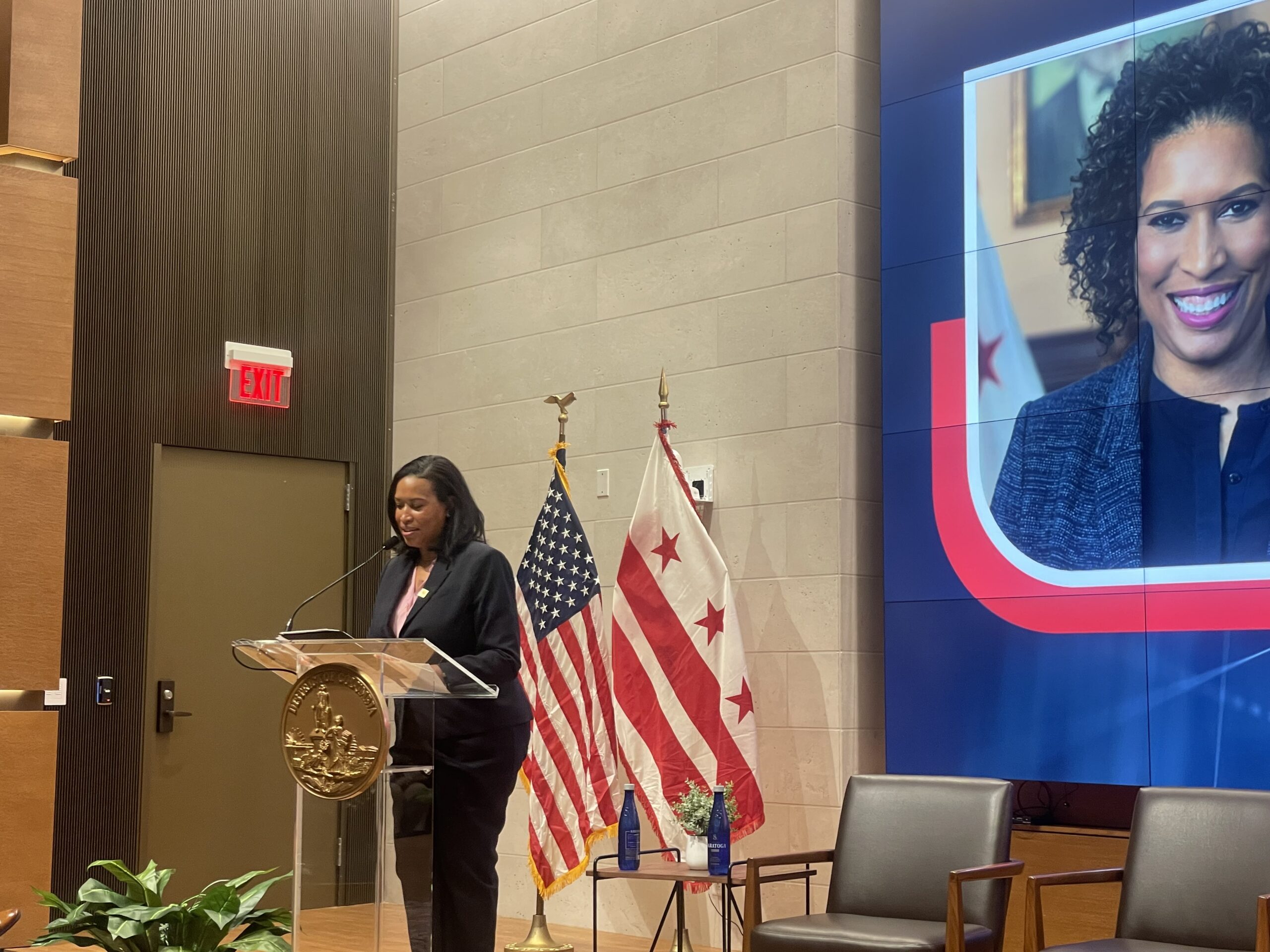There’s no question DC remains inextricably tied to the federal government — in tech, real estate and research — but that isn’t always a good thing, local leaders say.
Despite the ways to take advantage of the interconnectivity, at times it can hold the city back, as leaders discussed at a recent event hosted by the deputy mayor’s office. Authorities across the DC government and private sector discussed the future of economic development in the city, where it gets things right and where it can improve.
Tech is a key part of the district’s economy, largely encompassing cybersecurity and government-related IT, said Deputy Mayor Nina Albert. DC’s strengths lie in the “feds, eds and meds,” but there’s room to diversify the industry.
“There is a direct connection between what the federal government procures and the ecosystem or industry that’s emerging,” Albert told Technical.ly. “And we’re just wanting to lean into that more, so that we can really harness that natural work and make sure that it extends to other types of technologies.”
Innovation to fill real estate vacancy
When attracting and retaining talent and corporations, real estate is a huge factor for leaders to grapple with.
After the pandemic, the real estate market remains weaker than it was before. Kyla Schoppmann, the president of CBRE’s mid-Atlantic markets, cited a 22.7% overall vacancy in DC. One of the real estate and investment firm’s studies found converting buildings to housing or other uses will alleviate that percentage. She also noted improvements in office leasing since the pandemic — specifically in the government, nonprofit and private legal sectors.
But possible solutions exist, according to Schoppmann: Researchers found that developers can create 22,000 units in downtown DC by converting office buildings to housing. There’s also room to physically build more housing, per the presented study.
To make it successful, developers and leaders need to think at the “micro market” level, said John Stephens, a senior director in consulting at CBRE. He cited Gallery Place as being ideal for building conversions.

In these markets, one group at the DC architecture firm Gensler is vying for the creation of “tech neighborhoods” — areas where tech sector employees can live, work and collaborate. Their ideas for these districts include parks that have internet connectivity and what they call “club tech,” or a place for people to co-work and do hands-on research and testing of technology.
The Gensler team was also adamant that these neighborhoods would exist for Big Tech firms, small firms and students to work together.
At least one of these models already exists in DC, Deputy Mayor Albert noted. Union Market in Northeast fits into this idea of a place where residents can “socialize, dwell and innovate.” For example, the new tech hub Station DC opened over the summer in that neighborhood, which is also rife with housing and restaurants.
Federal retreat forcing DC’s hand
Despite being the nation’s capital, the federal presence in DC is atrophying, said Norman Dong, a partner at FD Stonewater. Since the pandemic, it’s only gotten worse, and it’s a drag on economic development.
The real estate firm’s leader thinks the federal government can play a key role in ditching buildings no longer of use. Vacancy rates won’t get back to the same capacity as before Covid, when offices weren’t even at full capacity, he said. Now, there needs to be action, but he’s seen agencies “paralyzed” on what to do next.
“The stars are never going to align perfectly here, and at some point, you need to play the hand you’ve been dealt,” he said on a panel.
Plus, a huge chunk of leases by the federal government, totaling 36 million square feet, will be up in 2028, said Darian Leblanc, executive vice chairman and director of government services at Cushman & Wakefield. The federal government, DC and real estate leaders all need to work together to find ways buildings can be best used, either through converting to housing, creating retail spaces or other ways.
DC Mayor Muriel Bowser said she’s frustrated with federal offices going empty. She’s also been of the opinion that workers should return to the office.
“Is the job getting done for the American people?” she asked.
In her view, if the federal government is walking away from these buildings, it needs to be involved in the conversion process. The land should be transferred to DC through the General Services Administration, just like transfers happen between agencies.
“We’re not just talking about federal office buildings, like the building that some of you might go to work in. We’re talking about grand buildings that were meant to reflect the greatness of our democracy,” she said during her remarks. “We’re different, and until we become a state, we’re different.”







